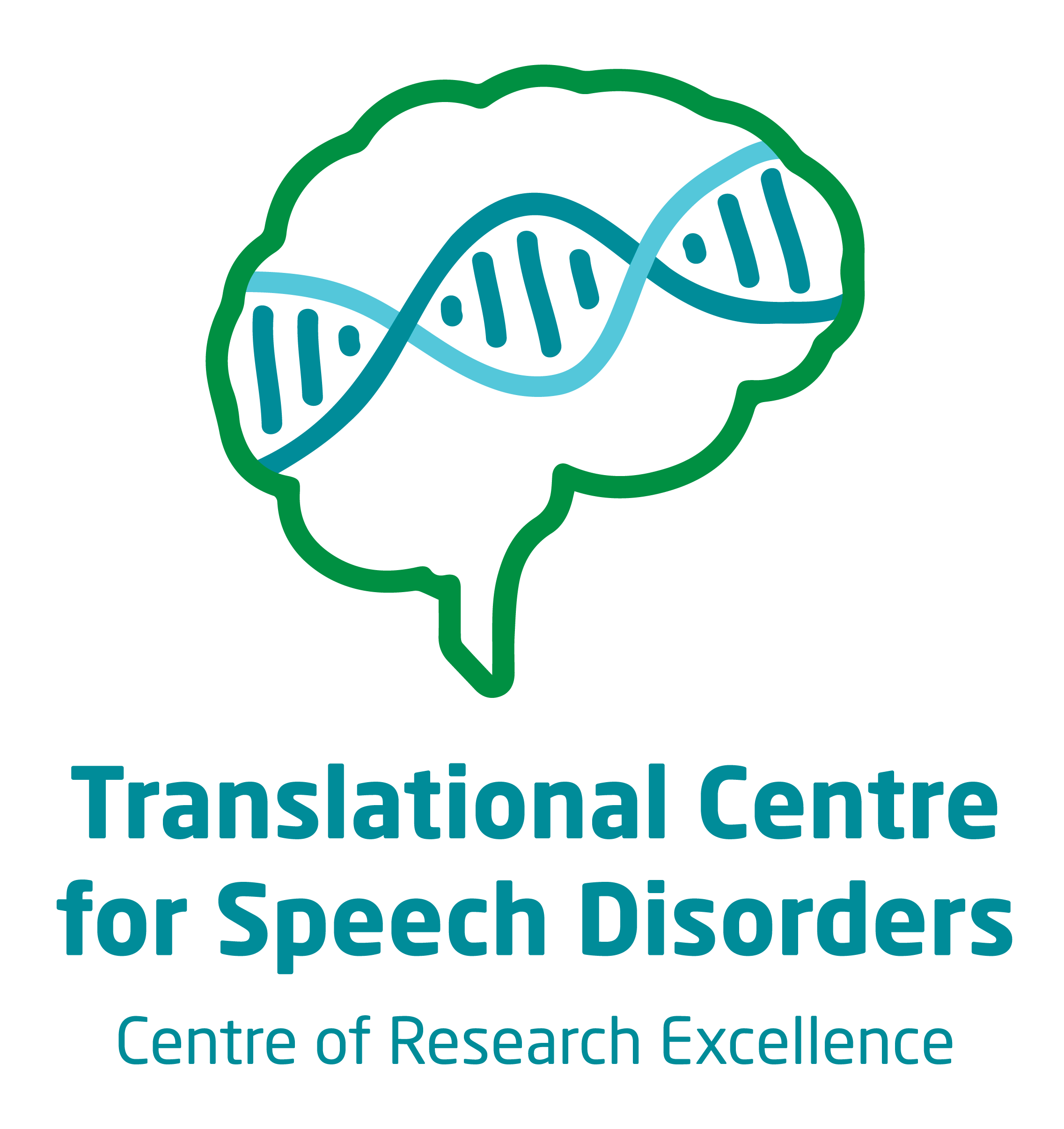Klinefelter syndrome
What is Klinefelter syndrome?
Klinefelter syndrome is caused by the presence of extra X chromosome/s in males. The most common form is referred to as 47,XXY. This is found in 80% of individuals Klinefelter syndrome. Some people may have 48,XXXY, 49XXXXY, or 48,XXYY depending on the number of extra X chromosomes (and sometimes Y chromosomes) that they have. Other people have what is called a “mosaic” form where the cells throughout the body have a mix of typical 46,XY chromosomes and atypical 47,XXY chromosomes.
Contact
For further information, do get in touch with the CRE Speech and Language team at:
Email: geneticsofspeech@mcri.edu.au
Phone: (03) 9936 6334
Frequently asked questions
Communication impairments are common in individuals with Klinefelter syndrome, however the speech and language profile can vary greatly from person to person. Individuals with Klinefelter syndrome may have difficulty with one or more communication domains, including oral-motor development, speech, language, literacy and pragmatics (social skills). The most common difficulties are seen in pragmatic/social language, language memory, and literacy (i.e., reading) and are often more common in older children and adolescents with Klinefelter syndrome. Individuals with Klinefelter syndrome may also have persistent phonological errors in their speech production. 3
Medical features of Klinefelter syndrome include small firm testes with reduced function (i.e. hypogonadism), small penis size, infertility and azoospermia (i.e. semen that contains no sperm), feminine distribution of fat tissue including gynaecomastia (i.e. breast tissue), decreased facial or pubic hair, tall stature, increased arm span, and hypotonia (i.e. low muscle tone). Osteoporosis and mild anaemia are also noted. The above medical features become particularly noticeable after puberty. 7
Developmentally, those with Klinefelter syndrome can have fine and gross motor difficulties, and delayed motor milestones.3 They are also more likely to be diagnosed with ASD (Autism Spectrum Disorder) or have features of autism. 3, 5
Approximately 50% of individuals diagnosed with Klinefelter syndrome begin speaking their first words at the expected age, i.e. roughly 12 months of age. It is not uncommon for others to have delays in early language6 and some children have not developed first words until 5 years of age.
The features of early speech in Klinefelter syndrome is varied, but articulation and phonological errors are noted (particularly fronting “th” to “f”). For most individuals, their speech difficulty is mild.
As those with Klinefelter syndrome get older, their phonological and articulation errors may remain present for some time into adolescence. Although delays of this nature, into the teen years, are atypical and unusual they are (in most cases) very mild. 3 For example, a boy may continue to have difficulty producing one sound (e.g. “th”) as a teenager, but they are still completely intelligible (able to be understood) by those around them. It has been found that having “hyponasality” is also common, i.e. they have less coming through the nose when talking and may sound like they have a blocked nose/cold. It is much less common for those with Klinefelter syndrome to have disordered speech patterns, dysarthria or CAS (Childhood Apraxia of Speech), although these diagnoses have been noted in some.
The majority of children and teenagers with Klinefelter syndrome attend mainstream school, however some children may require additional support and therapy from other specialities, such as speech pathologists.3, 4 Literacy (reading and writing) is a core challenge for those with Klinefelter syndrome and appears to become more challenging in secondary school, as the learning demands increase3, 8 so this is something that should be monitored closely.
There are currently no evidenced-based speech or language therapies developed specifically for individuals with Klinefelter syndrome. As the communication is so varied from person-to-person, speech and language development should be individually assessed to allow a personally tailored communication treatment program.
The profile of speech and language in Klinefelter syndrome is varied into adulthood across the population. Strengths and weakness fluctuate from person-to-person, but many adolescents struggle in particular with literacy and social skills.3 Adults with Klinefelter syndrome have been found to have difficulties in general language skills, verbal processing (i.e. taking in and comprehending what they hear), and executive functioning (i.e. relating to memory, flexible thinking and planning).1 Studies have reported increased passiveness, social impulsivity and inappropriate behaviour into adulthood, although studies are limited.2 Adults with Klinefelter syndrome report personal difficulty with the psychological impact of living with the syndrome and the impact of infertility.
References
- Boone, K. B., Swerdloff, R. S., Miller, B. L., Geschwind, D. H., Razani, J., Lee, A., Gonzalo, I.G., Haddal, A., Rankin, K., Lu, P., & Paul, L. (2001). Neuropsychological profiles of adults with Klinefelter Syndrome. Journal of the International Neuropsychological Society, 7, 446–456.
- Geschwind, D. H., & Dykens, E. (2004). Neurobehavioral and psychosocial issues in Klinefelter syndrome. Learning Disabilities Research & Practice, 19, 166–173.
- St John, M., Ponchard, C., van Reyk, O., Mei, C., Pigdon, L., Amor, D. J. & Morgan, A. T. (2019). Speech and language in children with Klinefelter syndrome. Journal of Communication Disorders, 78, 84-96.
- Turriff, A., Macnamara, E., Levy, H. P., & Biesecker, B. (2017). The Impact of Living with Klinefelter Syndrome: A Qualitative Exploration of Adolescents and Adults. Journal of Genetic Counseling, 26(4), 728–737.
- van Rijn, S., Swaab, H., Aleman, A., & Kahn, R. S. (2008). Social behavior and autism traits in a sex chromosomal disorder: Klinefelter (47XXY) syndrome. Journal of Autism & Developmental Disorders, 38, 1634–1641.
- Zampini, L., Burla, T., Silibello, G., Dall’Ara, F., Rigamonti, C., Lalatta, F., et al. (2018). Early communicative skills of children with Klinefelter syndrome. Clinical Linguistics & Phonetics, 32(2), 577–586.
- Nieschlag, E. (2013). Klinefelter syndrome: the commonest form of hypogonadism, but often overlooked or untreated. Deutsches Arzteblatt International, 110(20), 347-353.
- Aksglaede, L., Skakkebaek, N. E., Almstrup, K., & Juul, A. (2011). Clinical and biological parameters in 166 boys, adolescents and adults with nonmosaic Klinefelter syndrome: A Copenhagen experience. Acta Paediatrica, 100, 793–806.






